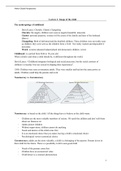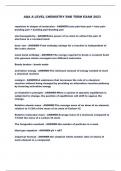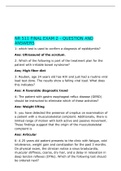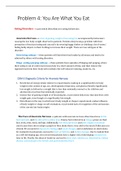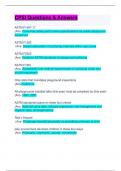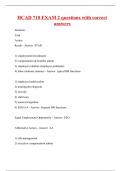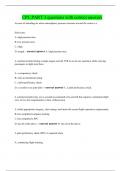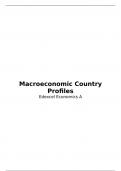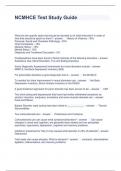Principles of Homeostasis
- By maintaining a relatively constant internal environment for their cells, organisms can
limit the external changes these cells experience
- This maintenance of a constant internal environment is called homeostasis
- Internal environment is made up of tissue fluids that bathe each cell, supplying
nutrients and removing wastes
- Maintaining the features of this fluid at the optimum levels protects the cells from
changes in the external environment, thus giving organism degree of independence
What is homeostasis?
- Maintenance of internal environment within restricted limits in organisms
- Involves trying to maintain chemical make-up, volume and other features of blood and
tissue fluid within restricted limits
- Homeostasis ensures the cells of the body are in environment that meets their
requirements and allows them to function normally despite external change
- Continuous changes take place in temp, pH and WP
o Occur around an optimum point
- Homeostasis is the ability to return to that optimum point and thus maintain organisms
in a balance equilibrium
Importance of homeostasis
- Essential for proper functioning of organisms for following reasons:
o Enzymes that control biochemical reactions within cells and other proteins are
sensitive to change in pH and temp
Any change reduces rate of reaction or may denature
Even small change in temp or pH can impair ability of enzymes to carry
out their roles effectively
Maintaining a fairly constant internal environment means reactions take
place at a suitable rate
o Changes to WP of blood and tissue fluids may cause shrink/ expansion of cells
Cells thus cant operate normally
Maintenance of constant blood glucose conc is essential in ensuring a
constant WP
Constant blood glucose conc also ensures a reliable source of glucose
for respiration by cells
o Organisms with ability to maintain constant internal environment are more
independent of changes in external envrionment
May have a wider geographical range and thus have a greater chance of
finding food, shelter, etc.
Control mechanisms
- Control of any self-regulating system involves a series of stages that feature:
o Optimum point – the point at which the system best operates
Is monitored by a
o Receptor – detects any deviation from optimum
Informs the
o Coordinator – coordinates information from receptors
Sends instruction to an appropriate



